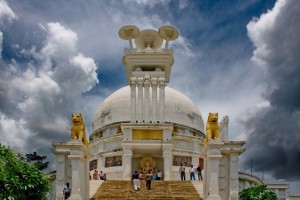 A thriving centre of art and culture, once the heart land of erstwhile Kalinga Kingdom, Bhubaneswar is presently renowned as the capital city of State of Orissa in India. Bhubaneswar, literally means the Lord (eswar) of the Universe (bhuban), is a hub of historic temples and the city is webbed with many concrete lanes. The present modern city of Bhubaneswar was established in 1946 which is designed by the world renowned German architect Otto Königsberger. The capital city, once known for its architecture and grand temples, is presently a thriving centre for commerce and business. Having blended very nicely its formidable past with its modern aspirations and facilities, it forms a part of the Golden Triangle of holy temple cities Puri and Konark.
A thriving centre of art and culture, once the heart land of erstwhile Kalinga Kingdom, Bhubaneswar is presently renowned as the capital city of State of Orissa in India. Bhubaneswar, literally means the Lord (eswar) of the Universe (bhuban), is a hub of historic temples and the city is webbed with many concrete lanes. The present modern city of Bhubaneswar was established in 1946 which is designed by the world renowned German architect Otto Königsberger. The capital city, once known for its architecture and grand temples, is presently a thriving centre for commerce and business. Having blended very nicely its formidable past with its modern aspirations and facilities, it forms a part of the Golden Triangle of holy temple cities Puri and Konark.
The grand city is renowned for its temples as well as applique work of Pipli, Ikat sarees, cane furniture and Bidri-ware. Art is an integral part of the city life from time immemorial, the world renowned Odissi dance form has originated in this city. The city is endowed with many tourist attractions and religious spots. The city houses more than 500 temples, including the world famous temples like Lingaraj Temple, Mukteswar Temple, Bindu Sagar, Shatrughaneswar Temple, Vaital Temple, Parashurameswar Temple and Raj Rani Temple. Thousands of devotee throng to these temples in Bhubaneswar on a regular basis.
A well maintained Regional Plant Resource Center (RPRC) is a prime attraction here. This centre is famous for maintaining the largest Rose garden in India. Other important attractions in the city are Orissa State Museum, Udayagiri and Khandagiri Caves, Orissa Modern Art Gallery, Tribal Museum and Pathani Samanta Planetarium. Kalinga, the famous place of War after which Great Emperor Ashoka renounced violence is a short distance away from Bhubaneswar.
Being the seat of Tribhubaneswar or ‘ Lord Lingaraj ‘, Bhubaneswar is an important Hindu pilgrimage centre. Hundreds of temples dot the landscape of the Old Town, which once boasted of more than 2000 temples. Bhubaneswar is the place where temple building activities of Orissan style flowered from its very inception to its fullest culmination extending over a period of more than one thousand years.
The new Bhubaneswar with its modern buildings and extensive infrastructure perfectly complements its historic surroundings. With facilities to cater to every type of visitor, Bhubaneswar makes an ideal tourist destination.
This is city offers all facilities, modern and traditional, to the tourists and has already gained the status of a permanent spot in the tour plan of foreign tourists.
History
The history of the city stretches back over 2000 years, the area first appears as the ancient capital of Kalinga. Bhubaneshwar, the ‘city of temples’, named after Tribhuvaneswar, ‘Lord of Three Worlds’, still preserves over 500 of India’s finest temples, around which the religious life of the city revolves. Mythological references and the epigraphic sources describe the area as Ekamra Kshetra and Saiva Pitha. In 1936, the Odisha (Odisha (Orissa)) became a separate province with Cuttack as its Capital, which was eventually changed to Bhubaneswar in 1956. Together with Puri and Konark, Bhubaneswar forms the ‘golden triangle’, one of the most visited destinations in East India, for its proud possession of magnificent sculp-ture and majestic architectural heritage.
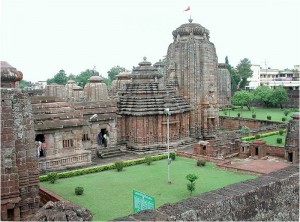 The history of Bhubaneswar and its environs, as the several archaeological finds from the dawn to historical period to the end of Hindu rule, testify goes back much earlier than the 7th to 13th centuries. Its sanctity as Ekamrakshetra led rulers to embellish the area with grandeur temples actuated by the hope of an eternal abode in heaven. The Bhubaneswar area first appears in history during the 4th century BC. The fortified city of Sisupalgarh, 5 km northeast of Dhauli and 2.5 km southeast of Bhubaneswar was the site of Kalinga Nagar, the Capital of the Chedi (Mahameghavahan) Kings. Excavations here revealed that this Fort had a well developed civil and military architecture, all through the beginning of the 3rd century BC to the middle of the 4th century AD. The archaeological remains at Dhauli, and hills of Udayagiri and Khandagiri give evidence of both Jain and Buddhist settlements around Bhubaneswar in the first two centuries BC, also see for Dhauli on pg. 41, Udayagiri and Khandagiripg. 46. The waning of Buddhism and vanishing of Jainism with the growth of Saiva Pasupata Sect, the second century BC saw Brahmanism as the dominant religion underthe successive dynasties that ruled Odisha (Orissa)-the Shailodbhava and the Bhaumakaras in the 12-13th centuries. The temple building reached the zenith of its glory between 7th and 12th centuries when thousands of sandstone temples were erected around the Bindu Sagar, earning it the title ‘The city of Temples’. The period under the Gangas saw emergence of Vaishna-vism to prominence. The perfect symphony between its architecture and sculpture, the mastery carvings and the grand repertoire of its motifs make these temples unique. In the 15th century, the Mughals eventually raided the city and razed all but a few of the temples. After independence, Bhubaneswar was declared the new Capital replacing Cuttack.
The history of Bhubaneswar and its environs, as the several archaeological finds from the dawn to historical period to the end of Hindu rule, testify goes back much earlier than the 7th to 13th centuries. Its sanctity as Ekamrakshetra led rulers to embellish the area with grandeur temples actuated by the hope of an eternal abode in heaven. The Bhubaneswar area first appears in history during the 4th century BC. The fortified city of Sisupalgarh, 5 km northeast of Dhauli and 2.5 km southeast of Bhubaneswar was the site of Kalinga Nagar, the Capital of the Chedi (Mahameghavahan) Kings. Excavations here revealed that this Fort had a well developed civil and military architecture, all through the beginning of the 3rd century BC to the middle of the 4th century AD. The archaeological remains at Dhauli, and hills of Udayagiri and Khandagiri give evidence of both Jain and Buddhist settlements around Bhubaneswar in the first two centuries BC, also see for Dhauli on pg. 41, Udayagiri and Khandagiripg. 46. The waning of Buddhism and vanishing of Jainism with the growth of Saiva Pasupata Sect, the second century BC saw Brahmanism as the dominant religion underthe successive dynasties that ruled Odisha (Orissa)-the Shailodbhava and the Bhaumakaras in the 12-13th centuries. The temple building reached the zenith of its glory between 7th and 12th centuries when thousands of sandstone temples were erected around the Bindu Sagar, earning it the title ‘The city of Temples’. The period under the Gangas saw emergence of Vaishna-vism to prominence. The perfect symphony between its architecture and sculpture, the mastery carvings and the grand repertoire of its motifs make these temples unique. In the 15th century, the Mughals eventually raided the city and razed all but a few of the temples. After independence, Bhubaneswar was declared the new Capital replacing Cuttack.
The southern suburbs of the city have remnants of some of the striking temples like the Lingaraja Temple, the Muktesvara Temple etc., together with the famous archaeological and historical sites of Dhauli, Khandagairi and Udayagiri. The area on the northeast has wide tree lined avenues and many a modern administrative buildings. The commercial and the business activities are centered around places named as Kalpana Square or Kalpana Chhak on the busy Cuttack Road, Rajmahal Square, Station Square or Master Canteen and the road further on to Vani Vihar, Janpath, housing most lodges, restaurants, shopping arcades and banks.
Set on the Mahanadi Delta, the present city is a modern happening place with top class infrastructure. Many a major national and international conglomerates having inked agreements to profitably invest in the State occupy offices here in Bhubaneswar. Star category hotels, restaurants, cafes, shopping malls provide quality lifestyle and refinement.
One of the earliest mentions of the city can be found on the Kalinga War which was fought in the 3rd century B.C. the city was later conquered by Emperor Kharavela who ruled here between 1st and 2nd century B.C. It was during the reign of king Kharavela that most of the temples were built.
The city was under the Mughals rule in the 15th century. The city came to limelight only in 1936, when Orissa came under the British control with Cuttack as its capital. Cuttack is known to have been the capital of Orissa since the 12th century. The city was declared as a part of Orissa in 1947, after independence. It was named as the capital of Orissa on 13th April 1948.The city was designed by German Architect Otto. H. Konigsberger.
Tourist Attractions
Lingaraj Temple
An ancient temple built as early as 7th century is a wonderful mirror that displays the architectural marvel and craftsmanship of Orissa. The majestic structure of 147 feet high is enclosed by tiny shrines. The main deity of the temple is Swaymbhu Linga. The most attractive feature of the ancient temple is exquisitely carved high tower.
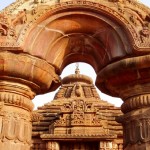 Mukteswara Temple
Mukteswara Temple
Situated in the heart of the city, the Mukteswara Temple established in 950 AD is dedicated to Lord Shiva and known as the ‘Gem of Orissa architecture’. Known for its awesome blending of ancient and modern architectural pattern, the temple exudes the charismatic fusion of ancient and modern architectural pattern which is a model of the Kalinga School of architecture.
Nandankanan Zoo
The spectacular Wildlife Sanctuary set amidst the verdant environs of Chandaka Forest, Nandankanan Zoo set up in 1960 houses diverse variety of species which include the majestic white tigers, black panther, lion-tailed macaque and several other species. This zoo is also famous as it is the breeding centre of Captive Gharial Crocodile. Facilities like boating also augment the pleasure of visit the zoo.
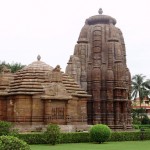 Raja Rani Temple
Raja Rani Temple
One of the popular temples in the temple city, the famous Raja Rani founded in the eleventh century and dedicated to Lord Brahma is adorned in red and gold sandstone. The temple wows the heart of every tourist with its subtle elegance, brilliant interiors, the various female postures and its sheer artistic brilliance.
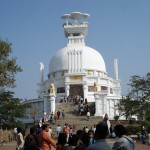 Dhauli Giri
Dhauli Giri
Located near the temple city, Dhaula Giri occupies an important place in the history as it is embellished with a rock edit that was erected by the famous king of Mauryan Dynasty, Ashoka the Great.One can feel the fragrance of Buddhism here as the edict is inscribed with Ashoka’s preaching. The place reverberate with the blooshed during the Kaling War and also the renunciation of violence the great Emperor afterwards.
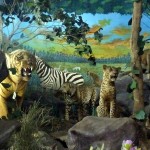 Orissa State Museum
Orissa State Museum
Set up in 1948, the Orissa State Museum houses an array of items such as bronze image, coins, copper plates, traditional and folk musical instruments and also houses a wide collection of manuscrips on palm-leaves out of which the most noteworthy is the manuscript of 12th century famous devotional poem Gita Govinda.
Ram Mandir
Ram Mandir which is located in the heart of Bhubaneswar City is a very calm and quite place.The place is a crowd puller with its regal architecture and appeal.The idols of Lord Rama,Sita and other Gods and goddesses embellish the place. The confines of the temple is very serene and quite place for spending time peacefully.A must visit for those who visit Bhubaneswar.
ISKCON Temple Bhubaneswar
Sitting right in the heart of the temple city, the ISKCON Temple attracts thousands of tourists who visit to catch a glimpse of the deities of Krishna, Balaram, Gaura Nithai, Subhadra and Jagannath. The temple creates a pristine ambience with daily bhajans and other rituals. For the devotees of Radha and Krishna, the newly constructed temple of the deities is a visual treat.
Bindusagar Lake Bhubaneswar
Located right in the north of the Lingaraj Temple, the beautiful Bindusagar Lake attracts hordes of tourist as it serves as a wonderful venue for leisure activities and as a lovely picnic spot. Another reason behind its popularity is that Lord Lingaraj is brought every year for a ritual bath and according to the popular belief, the water of the Lake has curative as well as purifying power.
Ekamra Haat
A showcase of Odisha (Orissa)’s art, craft, culture and cuisine, set amidst lush green environ, Ekamra Haat, on a 5 acre plot is managed by IDCO, on behalf of the State government. The architectural design and ambience of Haat matches the activities carried out there. The shops selling ethnic produce not only promote the traditional craft but provide a direct market access to the local artisans and weavers. The infra-structure and facilities also include an open-air theatre, lily pond with water fountain, food stalls, artisan rest rooms and info centre.
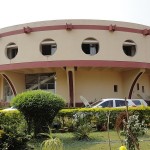 Pathani Samantha Planetarium
Pathani Samantha Planetarium
Named after the illustrious astronomer of Odisha (Orissa), the planetarium situated near the Acharya Vihar Square, features programmes related to astronomy in a domed shaped air conditioned auditorium. The sprawling 4 acre complex has well manicured garden around it.
Odisha (Orissa) Modern Art Gallery
Set with the sole objective to promote contemporary Orissan art, the Gallery at Surya Nagar has an array of work in oil and water, sculptures, serigraphy, etching, lithography, wood carvings showing myriad aspects of life.
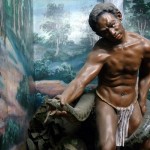 Museum of Man
Museum of Man
Also known as the Tribal Research Institute, located near the CRP Square, has collection of tribal dresses, weapons and jewellery representing more than 60 different tribal groups mostly concentrated in southern parts of Odisha (Orissa). Prototypes of the traditional style huts with authentic murals decorating their walls attract a large number of visitors. Sundays closed.
Nearby Attractions
Dayagiri and Khandagiri
The caves, 6 km from West of Bhubaneswar city centre, were chiseled out for the ascetic Jain monks, also has some inscriptions describing the exploits of king Kharavel.
Nandankanan
About 20 km from city centre is a Zoo and a botanical garden surrounded by dense forest, famous for breeding of various endangered species, safaris and white tigers.
Hirapur
15 km southeast of Bhubaneswar, situated on the eastern bank of river Kuakhai, the shrine Chausath Yogini Temple in the village of Hirapur is dedicated to 64 manifestations of the goddess Shakti, who symbolizes female creative energy. All the images, called Yoginis carved out of the black chlorite stone in standing posture (0.6 m tall) are placed in niches in the sanctum. The inner enclosure of the temple is a circular enclosure with no roof overhead, resembling a Buddhist stupa. In the centre, there stands a mandapa enshrining the image of ‘Ekapada Shiva’, an incarnation of the Shiva. The outer wall has nine ‘Katyayani’ images depicting feminine charm at its best housed in its niches. The miniature size of the shrine and its hypaetheral shape makes it an interesting monument.
Atri
At a distance of 42 km from the Bhubaneswar or about 13 km from Khurda, the hot spring at Atri, near the famous Lord Hatakeswar Temple, is believed to have medicinal properties. The waters of spring with high percentage of sulphur bubbles up from the ground amidst paddy fields. The water is at constant temperature of 55°C is channelized to two ponds comprising a bathing complex for the visitors. The temple is the venue of a grand annual fair, Makar Jatra, on the day of Makar Sankranti (mid January) when the visitors congregate in large numbers to worship Lord Hatakeswar to fulfill their desires and bath in the ponds to get cure of their diseases.
Pipli
A small village enveloped in a blaze of colour, 15 km South of Bhubaneswar, on the highway to Puri, is home of applique work. The craft originated to serve temples, providing intricately stitched coloured awnings and covers for deities and hangings for festival days, details on the craft.
How To Reach Bhubneshwar
By Air: The Biju Patnaik Airport in Bhubaneswar provides quick access to cities like Kolkata and Delhi. Regular flight is available to reach the above mentioned cities. Domestic airlines like Jet Airways, Air Sahara and a whole lot more link it to cities like Hyderabad and Mumbai.Indian Airlines also provide links the city with other cities like Varanasi, Nagpur and other cities of India.
By Rail: Since Bhubaneswar happens to be a prime railhead, several express and superfast trains connect it prime cities of India such as Kolkata, Guwahati, Delhi, Chennai and other States. One can easily reach the capital city of Orissa from any part of the country by rail.
By Road:The capital of Orissa is conveniently connected to the rest of the country by national highways. The city bus stand on NH5 has good access to various parts of the country. Buses are the oft preferred mode of transport in Bhubaneshwar. Many town buses, run by the government, ply through the city of Bhubaneshwar encompassing all the major areas and regions. These buses are all run by the government and are all very cheap. While travelling through buses in Bhubaneshwar, you will need to shell out around Rs 5 to 10, depending on the distance covered.
Bhubneshwar General Facts
State Orissa
Population 904,225
Area 419 sq km
Languages Oriya Hindi,English
Altitude 45m
STD code 0674
Longitude 85° 52′ E
Latitude 20° 15′ N
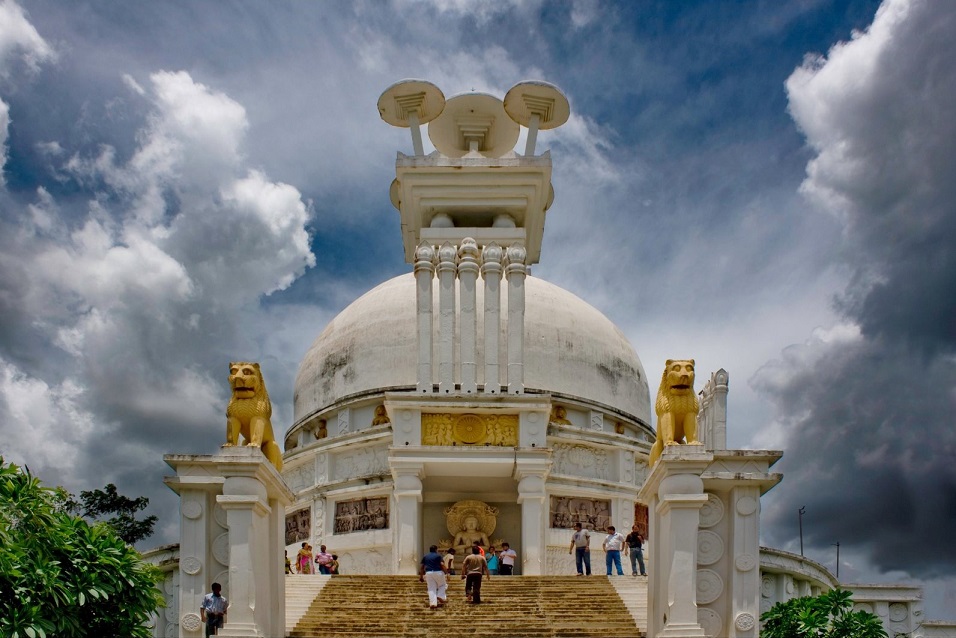
Submit your review | |













One of the lovely hotels in bhubaneswar with very good hospitality and glorious accommodation…..